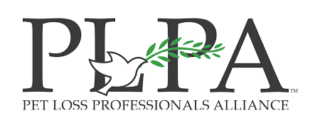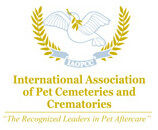The following list represents many current and classic books, book chapters and journal articles about clinical communication and client support during grief. Please let us know about any other references you feel should be added to this compilation.
Books
Barton Ross, C. & Baron-Sorensen, J. (2007). Pet Loss and Human Emotion: A guide to recovery. New York, NY: Routledge.
Carmack, B.J. (2003). Grieving the Death of a Pet. Minneapolis, MN: Augsburg Fortress.
Cornell K., Brandt J., and Bonvicini, K. (2007). Veterinary Clinics of North America, Small Animal Practice: Effective Communication in Veterinary Practice. Vol. 37, Number 1.
Durrance, D. and Lagoni, L. (2010). Connecting with Clients: Practical communication for 10 common situations. AAHA Press, Lakewood, CO.
Figley, C. and Roop, R. (2006). Compassion Fatigue in the Animal Care Community, Washington, D.C.: Humane Society Press, Humane Society Press.
Frey W.H. and Lanseth, M. (1985). Crying: The Mystery of Tears, Minneapolis, MN: Winston Press.
Holliday, M. (2001). Coaching Mentoring, and Managing, Career Press Inc.: Franklin Lakes, New Jersey.
Kowalski, G. (2006). Goodbye Friend: Healing wisdom for anyone who has ever lost a pet. Novato, CA: New World Library.
Kurtz, S.M., Silverman,J. and Draper, J.. (1998). Teaching and Learning Communication Skills in Medicine (Arbingdon, Oxon, UK: Radcliffe Medical Press.
Lagoni, L., Butler, C. & Hetts, S. (1994). The Human-Animal Bond and Grief. Philadelphia, PA: W.B. Saunders.
Lagoni, L. and Durrance, D. (2011). Connecting with Grieving Clients: Supportive communication for 14 common situations. AAHA Press, Lakewood, CO.
Morehead, D., Brannan, J., Lagoni, L., Butler, C., & Wheeler, K. (2001). Guidelines for Bond-Centered Practice, Argus Institute, Fort Collins, CO.
Nakaya, S.F. (2005). Kindred Spirit, Kindred Care: Making health decisions on behalf of our animal companions. Novato, CA: New World Library.
Rando, T.A. (1984). Grief, Dying and Death: Clinical interventions for caregivers. Champaign, IL: Research Press.
Sife, W. (1998). The Loss of a Pet: A guide to coping with the grieving process when a pet dies. New York, NY: Howell Book House.
Silverman, J., Kurtz, S., and Draper, J. (1998). Skills for Communicating with Patients. Radcliffe Medical Press Ltd., Abingdon, Oxon, UK.
Stewart, M., Brown, J.B., Weston, W.W., et. al. (2003). Patient-Centered Medicine: Transforming the Clinical Method. San Francisco: Radcliffe Medical Press.
Tannen, D. (1994). Talking from 9 to 5: Women and Men in the Workplace, Avon Books, NY, NY.
Worden, W.J. (2008). Grief counseling and grief therapy: A handbook for the mental health practitioner. New York, NY: Springer Publishing Company.
Book Chapters
Butler, C. & Lagoni, L., A Bond-Centered Practice Approach to Equine Euthanasia. In Bertone, J. (Editor), Clinical Procedures for the Equine Practitioner, Elsevier Science, 2006.
Butler, C., Lagoni, L., Harvey, A., Withrow, S. & Durrance, D. (2001). A Bond-Centered Approach to Diagnoses, Treatment and Euthanasia. In Withrow, S. & MacEwen, G. (Eds.), Small Animal Clinical Oncology. Philadelphia, PA: W.B. Saunders.
Butler, C., Lagoni, L. & Olson, P. (1998). Reporting Animal Cruelty. In Recognizing & Reporting Animal Abuse: A Veterinarian’s Guide. Englewood, CO, American Humane Association.
Butler, C. & Lagoni, L. (1996). Children and Pet Loss. In Helping Children Cope with Bereavement and Death. Corr, C. & Corr, D., (Eds.) Springer Publishing, New York, N.Y.
Lagoni, L. (2011). Family-Present Euthanasia: Protocols for planning and preparing clients for the death of a pet. In Blazina, C., Boyraz, G. & Shen-Miller, D. (eds.), The Psychology of the Human-Animal Bond: A Resource for Clinicians and Researchers. New York, Springer.
Lagoni, L. (2007). Bond-Centered Cancer Care: An applied approach to euthanasia and grief support for your clients, your staff, and yourself. In: Withrow, S, Vail, D. (eds.), Small Animal Clinical Oncology, 4th Edition. Philadelphia: Elsevier Science.
Lagoni, L. (2002). Dealing with Patient Death and Grief on the Job. In Fassig, S. (Editor), Veterinary Associate’s Survival Guide. Lakewood, AAHA Press.
Lagoni, L., Butler, C. & Olson, P. (1999). Why the Link is Important to Animal Care, Animal Control, and Veterinary Personnel. In Ascione, F. R. & Arkow, P. (eds.) Child Abuse, Domestic Violence, and Animal Abuse: Linking the Circles of Compassion for Prevention and Intervention. West Lafayette, Indiana, Pudue University Press.
Lagoni, L, Butler, C. (1998). Small Animal Euthanasia: Behavioral Perspective. In Schoen, A., Wynn, S., eds. Complimentary and Alternative Veterinary Medicine: Principles and Practice. St Louis: Mosby.
Journal Articles
Antelyes, J. (1990). “Client hopes client expectations.” Journal of American Veterinary Medical Association. 197 (12): 1596-1597.
Bishop, G.A., Long, C.C., Carlsten, K.S., Kennedy, K.C. & Shaw, J. (2008). The Colorado State University pet hospice program: End-of-life care for pets and their families. Journal of Veterinary Medical Education, 35 (4), 525-531.
Brown, J.P. & Silverman, J.D. (1999). The current and future market for veterinarians and veterinary medical services in the United States: Executive summary. Journal of American Veterinary Medical Association, 215, 2, 161-183.
Coe, J.B., Adams, C.L., Bonnett, B.N. (2008). “A focus group study of veterinarians’ and pet owners’ perceptions of veterinarian-client communication in companion animal practice,’ Journal of American Veterinary Medical Association, Vol. 233, No. 7, October 1.
Fogle, B. & Abrahamson, D. (1990). Pet loss: A survey of the attitudes and feelings of practicing veterinarians. Anthrozoos, 3, 143-150.
Gage, M.G. & Holcomb, R. (1991). Couples’ perception of stressfulness of death of the family pet. Family Relations, 40, 103-106.
Gosse, B.H. and Barnes, M.B. (1994). “Human Grief Resulting from the Death of a Pet,” Anthrozoos 7: 103-112.
Hart, L.A. & Hart, B.L. (1987). Grief and stress from so many animal deaths. Companion Animal Practice, 1, 20-21.
Hart, L.A., Hart, B.L. & Mader, B. (1990). Humane euthanasia and companion animal death: Caring for the animal, the client and the veterinarian. Journal of the American Veterinary Medical Association, 197, 1292-1299.
Kurtz, S.M., Laidlaw, T., Makoul, G., et. al. (1999). “Medical education initiatives in communication skills.” Cancer Prevention and Control; 3:37-45.
McCutcheon, K.A. & Fleming, S.J. (2001-2002). Grief resulting from euthanasia and natural death of companion animals. Anthrozoos, ??Volume # and Page #??
McMillan, F.D. (1998). “Comfort as the Primary Goal in Veterinary Medical Practice,” Journal of American Veterinary Medical Association 212:19.
Pilgrim, M.D. (2010). “Communicating Social Support to Grieving Clients: The Veterinarians’ View,” Death Studies 34: 699-714.
Planchon, L.A. & Templer, D.I. (1996). The correlates of grief after death of pet. Anthrozoos, 9, 107-113.
Planchon, L.A., Templer, D.I., Stokes, S. & Keller, J. (2002). Death of a companion cat or dog and human bereavement: Psychosocial variables. Society & Animals, 10, 93-105.
Shaw, J.R., Adams, C.L., Bonnett, B.N. (2004). “What can veterinarians learn from studies of physician-patient communication about veterinarian-client-patient communication?” Journal of American Veterinary Medical Association, Vol. 224, No. 5, March1, 676-684.
Shaw, J.R., Bonnett, B.N., Adams, C.L., Roter, D.L. (2006). “Veterinarian-client-patient communication patterns used during clinical appointments in companion animal practice,” Journal of American Veterinary Medical Association, Vol. 228, No. 5, March 1, 714-721.
Stewart, M.A. (1995). “Effective physician-patient communication and health outcomes: a review”. Canadian Medical Association Journal; 152:1423-1433.
Toray, T. (2004). The human-animal bond and loss: Providing support for grieving clients. Journal of Mental Health Counseling, July 1.
Vaughan, D. (2004). Home euthanasia a valuable service. Vet Practice News (Online), Retrieved July 10, 2010.
Weisman, A.D. (1991). Bereavement and companion animals. Omega, 22, 241-248.





